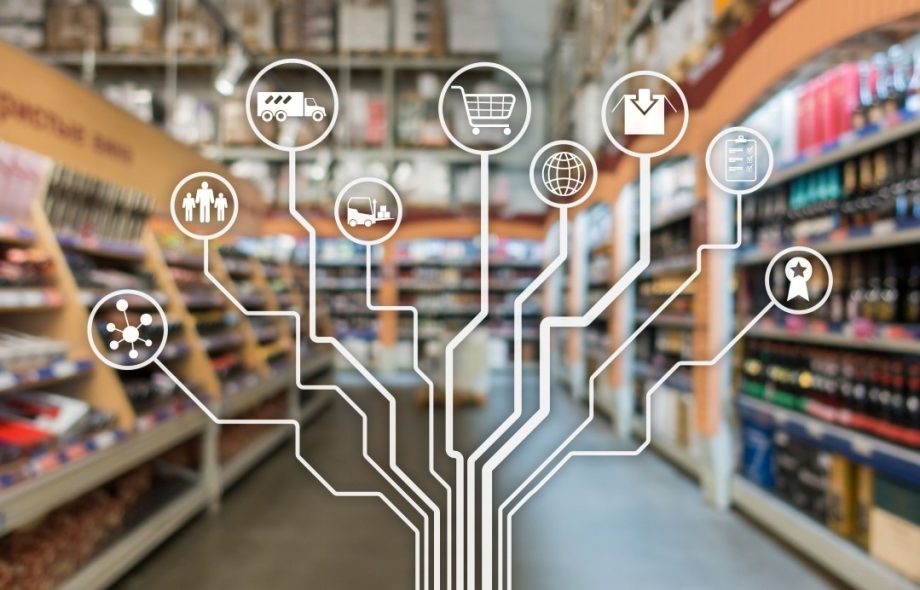According to TechSci Research report, “Retail Edge Computing Market – Global Industry Size, Share, Trends, Competition Forecast & Opportunities, 2030F, The Global Retail Edge Computing Market was valued at USD 4.87 billion in 2024 and is expected to reach USD 15.19 billion by 2030 with a CAGR of 20.88% through 2030F.
Request For Sample Copy of Report For More Detailed Market insight: https://www.techsciresearch.com/sample-report.aspx?cid=27516#requestform
Market Drivers
Rising Demand for Real-Time Customer Insights
Retailers are increasingly leveraging edge computing to gather, process, and analyze customer behavior data in real time. This helps deliver personalized experiences, optimize in-store layouts, and improve operational decisions instantly.
Growth of Omnichannel Retail Strategies
The convergence of online and offline retail channels necessitates faster data processing and seamless customer experience. Edge computing enables this by processing data close to the source, reducing latency and improving system reliability across platforms.
Need for Enhanced In-Store Automation
Edge computing powers smart shelves, digital signage, self-checkout systems, and autonomous robots. These technologies improve inventory management, customer service, and employee efficiency, driving adoption in physical retail environments.
Data Security and Compliance Pressures
Retailers are under increasing pressure to secure consumer data and meet data sovereignty laws. Edge computing reduces the risk of breaches by minimizing data transmission to the cloud and ensuring localized data processing.
Why Does Edge Computing Matter to Your Retail Customers? – Connected IT Blog
Latency-Sensitive Applications
Applications such as facial recognition, AR-powered product visualization, and real-time promotions require near-instantaneous processing, which edge computing can support more effectively than cloud-only solutions.
The rollout and expansion of 5G networks is another critical trend fueling the growth of the retail edge computing market. The ultra-low latency and high-speed capabilities of 5G networks make them a perfect complement to edge computing, particularly in retail environments that require fast, real-time data processing. As retailers increasingly adopt connected devices such as Internet of Things sensors, smart shelves, and digital signage, the need for a robust, high-speed network becomes more pronounced. 5G enhances edge computing by enabling faster communication between edge devices and centralized cloud systems when necessary, while also improving the performance of edge applications. This increased network speed helps retail businesses leverage the full potential of edge computing, facilitating innovations like augmented reality experiences, real-time inventory management, and personalized customer experiences. With 5G, retailers can transmit larger volumes of data from edge devices without compromising on speed or quality, allowing for smoother operations and quicker response times. The continuous expansion of 5G networks will drive further adoption of edge computing in retail, enabling more sophisticated and efficient operations and a better overall customer experience.
Browse over XX market data Figures spread through XX Pages and an in-depth TOC on the “Global Retail Edge Computing Market”@https://www.techsciresearch.com/report/retail-edge-computing-market/27516.html
Market Trends
Integration with AI and Machine Learning
Retailers are integrating AI algorithms at the edge to automate decisions such as dynamic pricing, predictive inventory restocking, and fraud detection—enhancing responsiveness and reducing cloud dependency.
Emergence of Micro Data Centers in Retail Stores
Retailers are deploying compact, localized data centers within store premises to process customer and inventory data in real time. These edge nodes support faster analytics and reduce reliance on centralized IT infrastructure.
Expansion of IoT in Retail Environments
The rise of connected devices—from smart mirrors to beacons—is accelerating the need for edge processing to handle the massive influx of data generated within stores, warehouses, and delivery fleets.
Sustainability and Energy Efficiency Focus
Retailers are adopting edge systems that consume less bandwidth and energy compared to cloud data transmission. Edge computing helps support sustainability goals by optimizing operations and reducing power consumption.
5G-Enabled Retail Experiences
With the rollout of 5G, edge computing becomes even more powerful, enabling ultra-low latency services such as mobile cashiering, live customer support, and immersive AR/VR shopping experiences.
Key market players in the Retail Edge Computing Market are: –
Amazon.com, Inc.
Microsoft Corporation
IBM Corporation
Intel Corporation
Cisco Systems, Inc.
Hewlett Packard Enterprise Company
NVIDIA Corporation
Google LLC
Oracle Corporation
Qualcomm Incorporated
Download Free Sample Report
Customers can also request for 10% free customization on this report.
“The Retail Edge Computing Market is expected to grow significantly in the future as retailers increasingly adopt real-time data processing to enhance customer experiences and streamline operations. The rise of Internet of Things devices, 5G connectivity, and artificial intelligence will drive demand for edge computing solutions that enable faster, localized data processing. Retailers will leverage edge computing for personalized shopping experiences, inventory management, and improved security. The need for reduced latency, cost efficiency, and enhanced operational agility will further fuel market growth. As technology advances, edge computing will become a core component of retail digital transformation strategies worldwide.” said Mr. Karan Chechi, Research Director of TechSci Research, a research-based global management consulting firm.
Market Opportunities
Expansion in Emerging Retail Markets
Edge computing offers a cost-effective way to bring advanced retail technology to emerging economies where cloud infrastructure may be limited, enabling innovation without heavy backend dependencies.
Growth of Smart Stores and Experiential Retail
Edge computing plays a key role in enabling smart stores—spaces where every element, from lighting to displays to customer movement, is interconnected and optimized in real time to deliver a memorable shopping experience.
Next-Generation Loyalty and Engagement Systems
Retailers can leverage edge-powered analytics to deliver hyper-personalized loyalty programs and promotions, enhancing customer retention and spend through real-time engagement.
Retail Supply Chain Optimization
Edge computing enhances supply chain visibility by processing logistics and inventory data on the fly. This enables just-in-time restocking, route optimization, and immediate anomaly detection.
Partnerships with Edge Infrastructure Providers
Opportunities are growing for retail companies to partner with telecom operators, edge infrastructure providers, and AI developers to co-create agile, scalable, and secure edge solutions tailored to retail environments.
Contact
TechSci Research LLC
420 Lexington Avenue,
Suite 300, New York,
United States- 10170
M: +13322586602
Website: https://www.techsciresearch.com
 :
https://in.pinterest.com/business/hub/
:
https://in.pinterest.com/business/hub/

